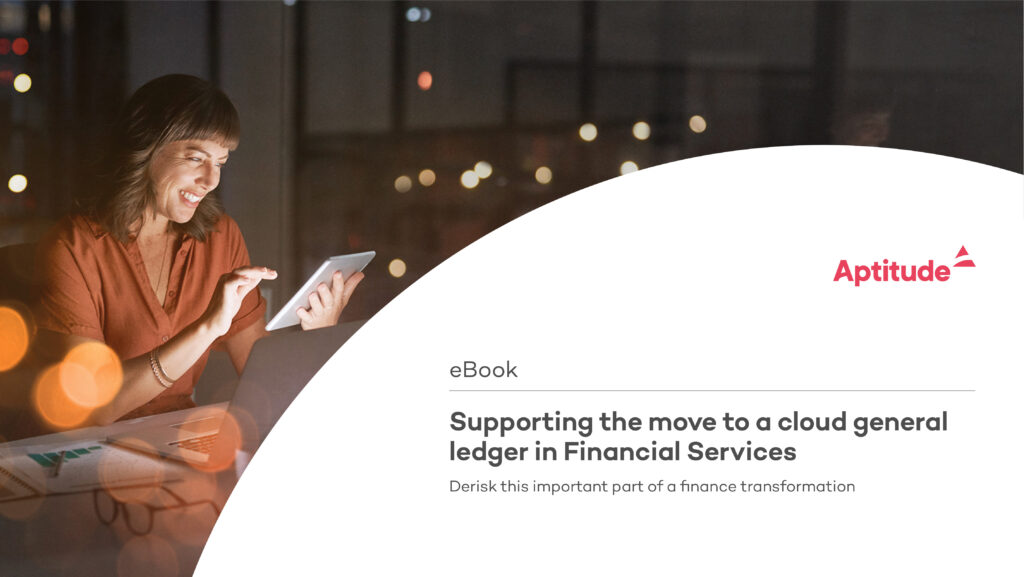For many years, the general ledger (GL) has served as the lynchpin of an organization’s finance operations. Responsible for holding information about every financial transaction that takes place during the life of a company, it’s used to generate the income statement, balance sheet and any other necessary financial reports.
But for many organizations, business complexity and data volumes have pushed their existing general ledger – or multiple ledgers – to the brink. General ledgers simply were not designed to hold the level of detail needed to meet today’s reporting standards.
An overburdened GL can create issues for an organization. Inefficient core processes with clunky workaround solutions can open a company up to operational risk and higher cost and resource requirements. And no linkage between balances and source system transactions can mean a lack of understanding of business drivers.
So how do you ensure your GL isn’t hindering your operations but is free to play the important role it needs to serve within your organization?
What is a subledger?
A subledger stores and maintains financials at a more detailed level than a General Ledger (GL), which aids analysis, reconciliations and substantiation without overloading the GL. It integrates and retains all transactional and event-level detail, providing a linkage point between the source systems where the data originated and the target systems (GL, Analytics & BI solutions, AI tooling, etc.) that can turn that data into reporting and insights.
The GL remains highly performant while protecting that valuable traceability from balance back through to the transactions that make up it up. Additionally, complex organizations that require multi-entity, multi-GAAP or multi-currency accounting can run multiple sets of reports off a single trusted data foundation and allow finance to ‘walk’ between the various accounting bases to understand variations and balance movements.
This can offer substantial value to finance teams looking to derive business insights from detailed data and get them into the hands of decision-makers, faster. In this environment, real-time data access is especially important. CFOs need to rely on pipeline trends, and real-time cast forecasts, and use both financial and business data to guide the company through these economically challenging times.
“When we look at a target state for a Financial Services organization, really irrespective of industry…you need the ability to dynamically adjust and to do that, you need a single integration point for the event data coming into the architecture. And that’s where the subledger technology becomes that critical piece. It becomes the integration point into the finance architecture for that product information. And if you design it the right way, you have the right level of granularity in the subledger to effectively activate any of the other technology components.”
-Davide Fourie, Finance Transformation Partner, KPMG
Three ways a subledger can help your GL shine
Using a subledger to maintain a ‘thin’ general ledger
The concept of a ‘thin vs. thick’ GL refers to the various ways of maintaining a general ledger. A ‘thick’ company GL is often what happens when more and more accounts, segments, fields and journal entries are added to keep up with the detail required for reporting requests. Bespoke and complex, the system then becomes clunky and difficult to manage.
‘Thin’ general ledgers on the other hand are kept – well – General! The solution is left to do what it’s meant to do which is focus on highly performant, statutory accounting and reporting as quickly as possible. Granular data can be held in the subledger with summarized balances sent to the GL.
Support a move to a cloud GL
One of the most challenging cloud projects for a Financial Services company can be the shift from an on-premise ERP solution – which includes the general ledger (GL) – to a cloud-based ERP solution.
Transitioning this core system – or systems as many organizations end up with multiple GLs due to merger and acquisition activity – from a deeply entrenched, highly customized solution to a SaaS solution can be very beneficial in terms of reducing the overall cost of finance and increasing automation and efficiency. However, it introduces certain challenges like aligning to solution standardization, addressing data migration requirements, and assessing the need for surrounding services. You can read a more about how companies like Commonwealth Bank of Australia, Legal and General America and OneAmerica are using subledgers to derisk the transition to a cloud GL as a part of a wider finance modernization effort.
Download the eBook now
Consolidate multiple general ledgers
At the end of every quarter is your finance team left to merge the reports from multiple GLs across your business into one set of statutory reports? Attempting to collect trial balance data (e.g., Assets, Liabilities, Equity, Revenue, and Expense accounts) from multiple general ledger systems, and manually mapping it to a centralized chart of accounts can introduce complexity, time and risk to any finance department. Add the specific challenges of local currency and GAAP reporting and the complexity and costs just increase.
A subledger can provide a centralized place to integrate, enrich and standardize data before generating required reports. This way, finance know they are using the same set of finance-certified data to generate all reporting.
Conclusion
Companies are finding value in finance digitalization solutions that include accounting hub and subledger modules that automate accounting, unify data and let finance users easily configure the solution without the involvement of IT.
This creates an environment where you have the best of both worlds. Finance teams retain access to the valuable detail they need and send aggregated balances to the general ledger, keeping it highly performant while protecting that valuable traceability from balance to transaction. It provides a central point within a finance architecture to retain data, deliver multi-GAAP, multi-entity and/or multi-currency reporting and apply accounting logic.
Have questions about how an accounting hub and subledger can drive automation, efficiency and better access to data? Reach out and book a short walk-through with our experts.



